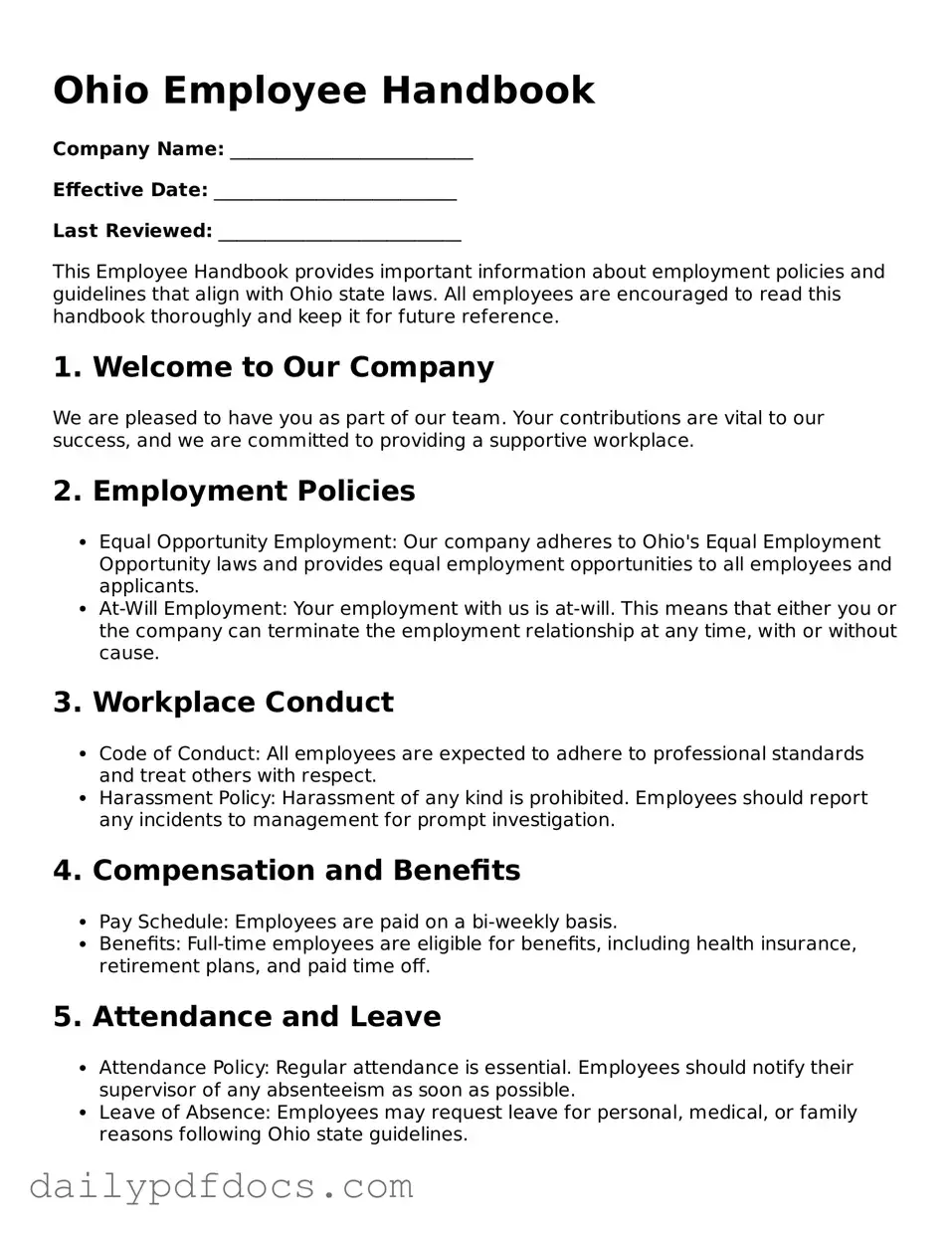What is the Ohio Employee Handbook form?
The Ohio Employee Handbook form is a document designed to outline the policies, procedures, and expectations of an organization regarding its employees. It serves as a guide for both employers and employees, detailing important information such as workplace conduct, benefits, and grievance procedures. This handbook helps ensure that everyone understands their rights and responsibilities within the workplace.
Why is it important for employees to have an Employee Handbook?
An Employee Handbook is crucial because it provides clarity and consistency in the workplace. Employees can refer to it for guidance on company policies, which can help prevent misunderstandings. Furthermore, having a well-structured handbook can protect both the employer and the employee by establishing clear expectations and reducing the risk of disputes.
What should be included in the Ohio Employee Handbook?
The handbook should include various sections covering topics such as company values, code of conduct, attendance policies, benefits information, and procedures for reporting harassment or discrimination. Additionally, it may outline disciplinary actions, leave policies, and safety guidelines. Including this information helps create a transparent work environment.
How often should the Employee Handbook be updated?
It is advisable to review and update the Employee Handbook at least annually or whenever there are significant changes in laws or company policies. Regular updates ensure that the handbook remains relevant and reflects the current practices of the organization. This practice also demonstrates a commitment to compliance and employee engagement.
Do employees need to sign the Employee Handbook?
While it is not legally required for employees to sign the handbook, obtaining a signed acknowledgment can be beneficial. This acknowledgment confirms that employees have received, read, and understood the handbook. It serves as a record that can be referenced if any disputes arise regarding the policies outlined in the document.
Can the Employee Handbook be used in legal disputes?
Yes, the Employee Handbook can play a significant role in legal disputes. If a conflict arises, the handbook can serve as evidence of the company's policies and procedures. Courts often look to the handbook to determine whether the employer followed its own guidelines. Therefore, it is essential that the handbook is clear, comprehensive, and consistently enforced.
How can employees provide feedback on the Employee Handbook?
Employees should feel encouraged to provide feedback on the Employee Handbook. Organizations can establish a formal process for submitting suggestions, such as an anonymous feedback box or scheduled meetings. This approach not only fosters open communication but also allows the handbook to evolve based on employee input, making it a more effective resource for everyone.
